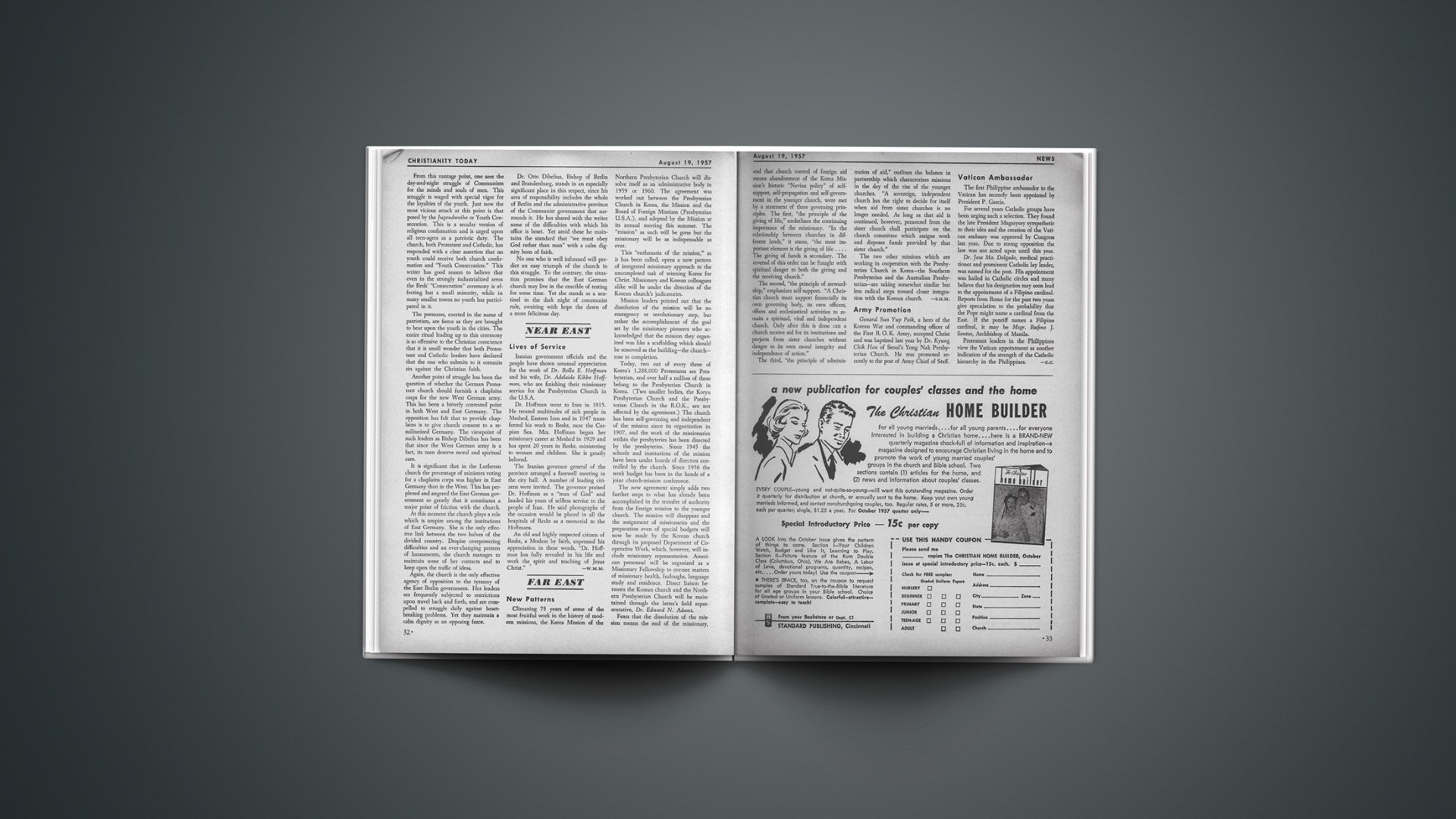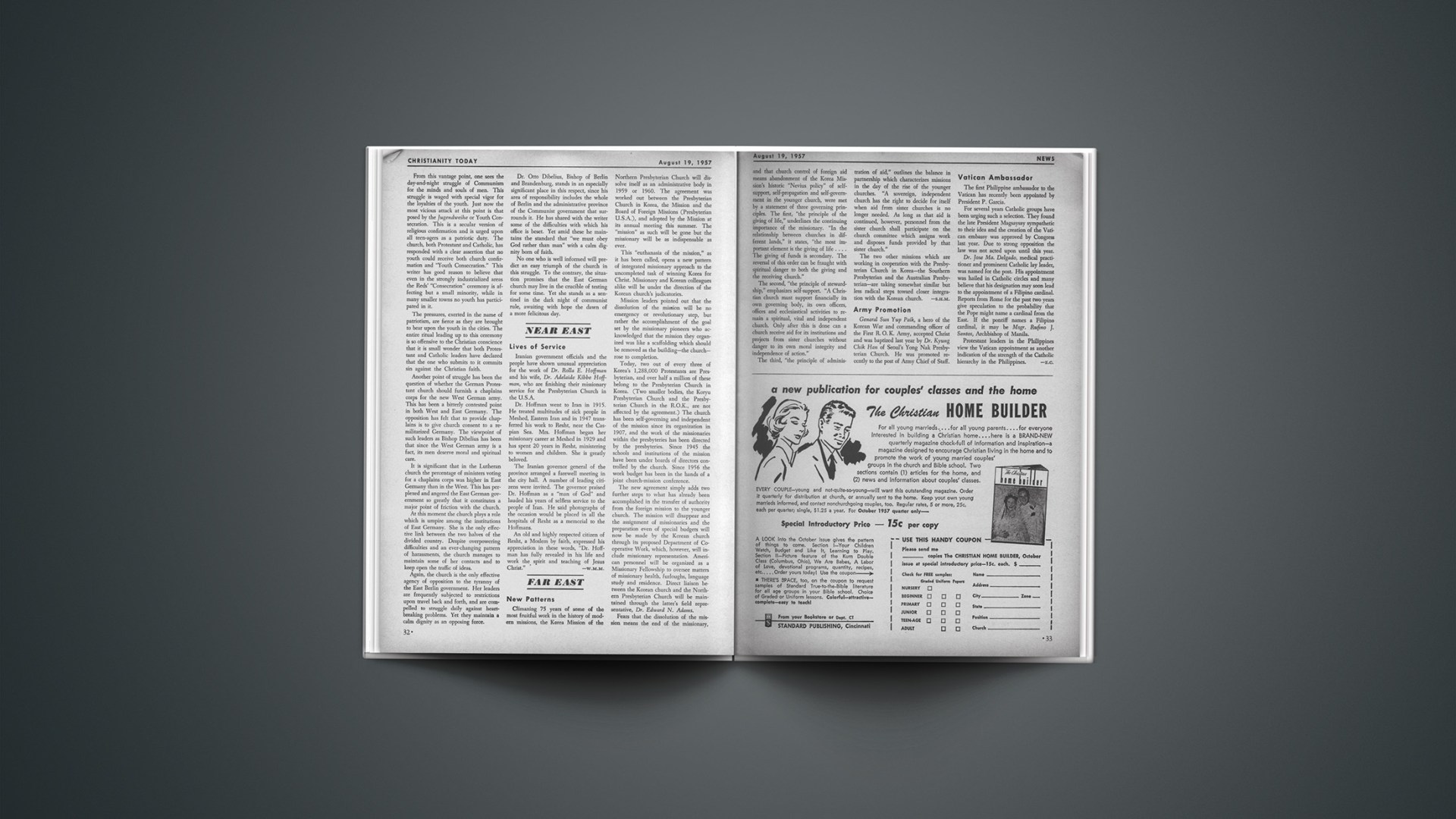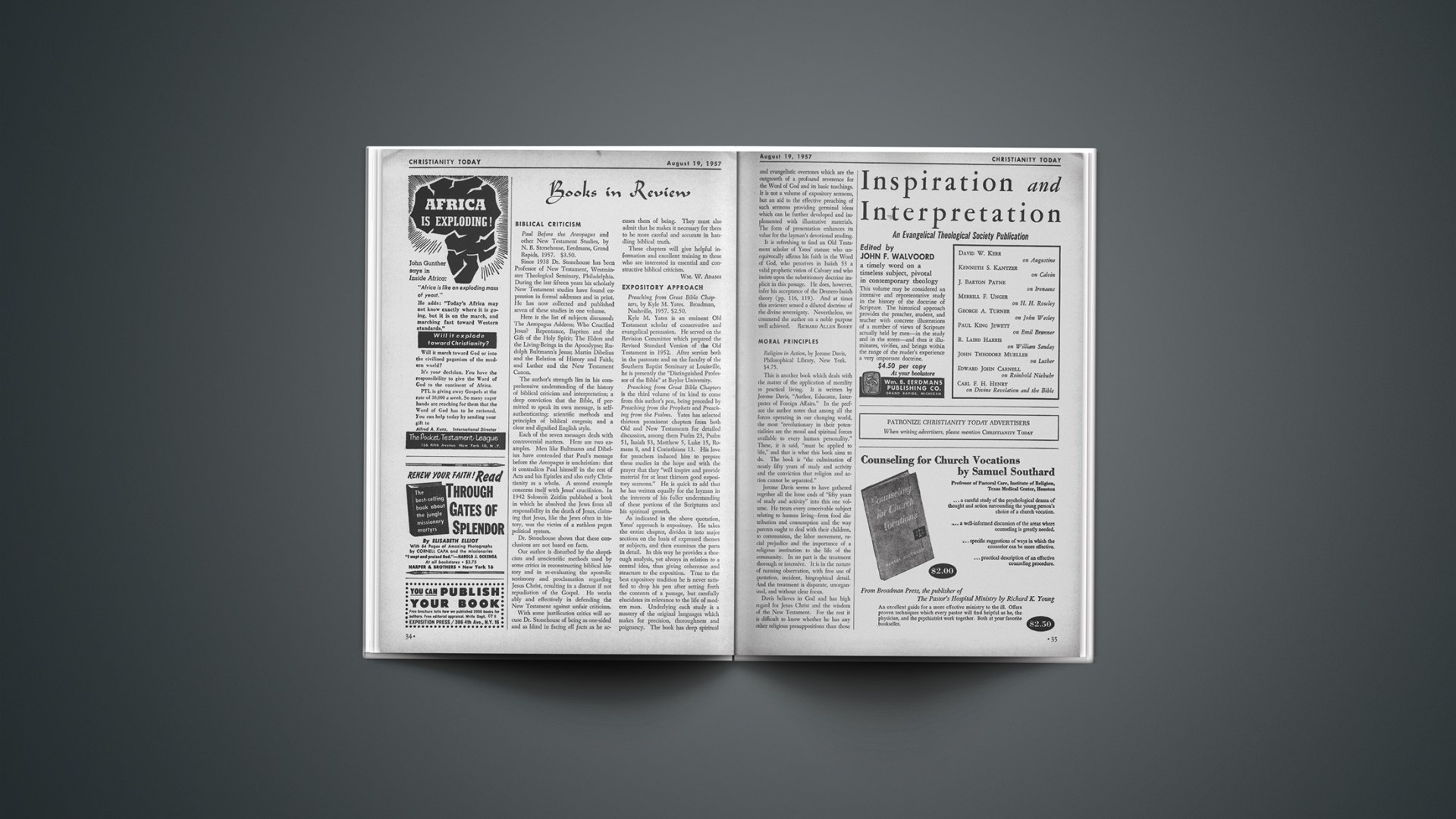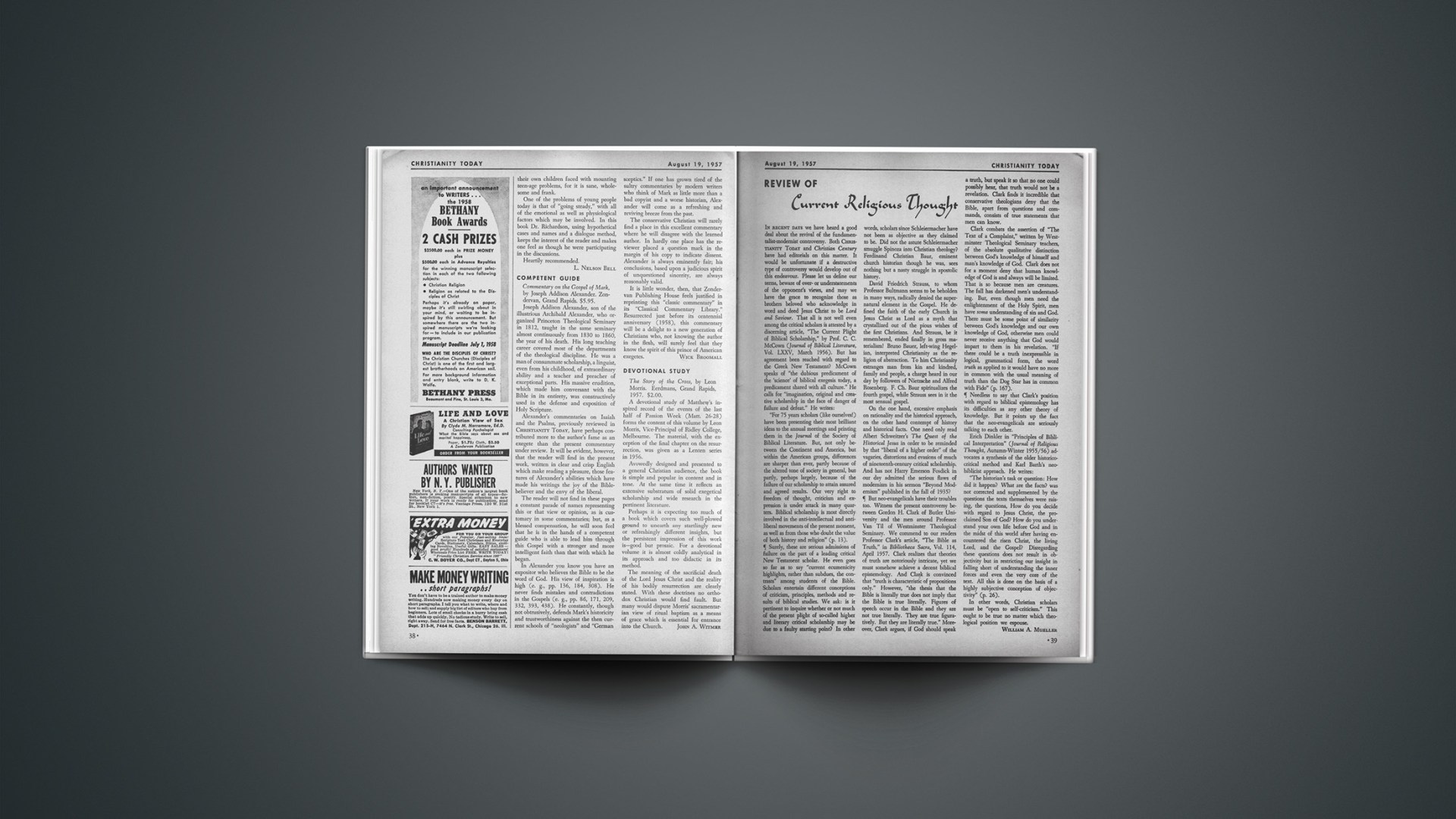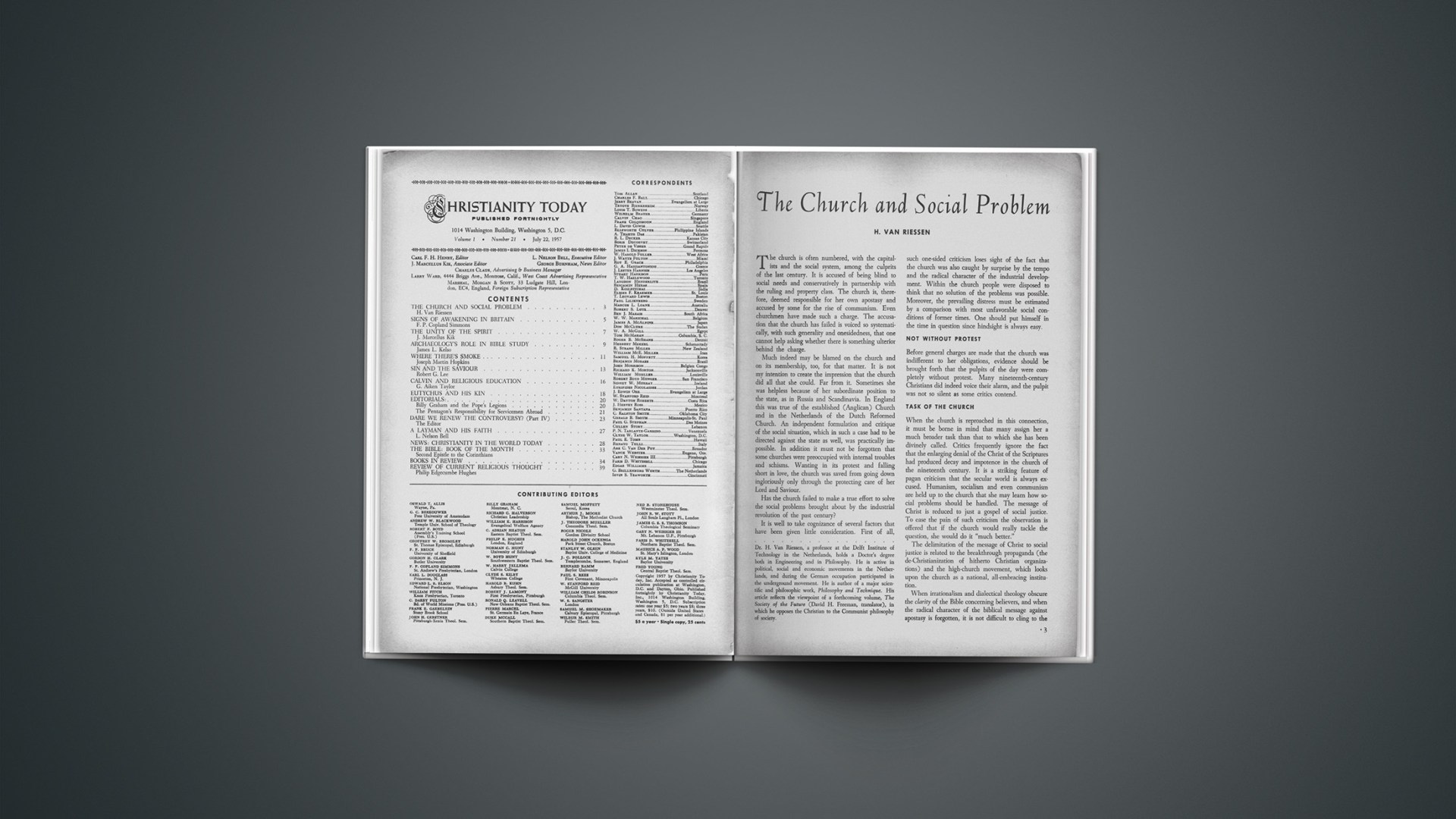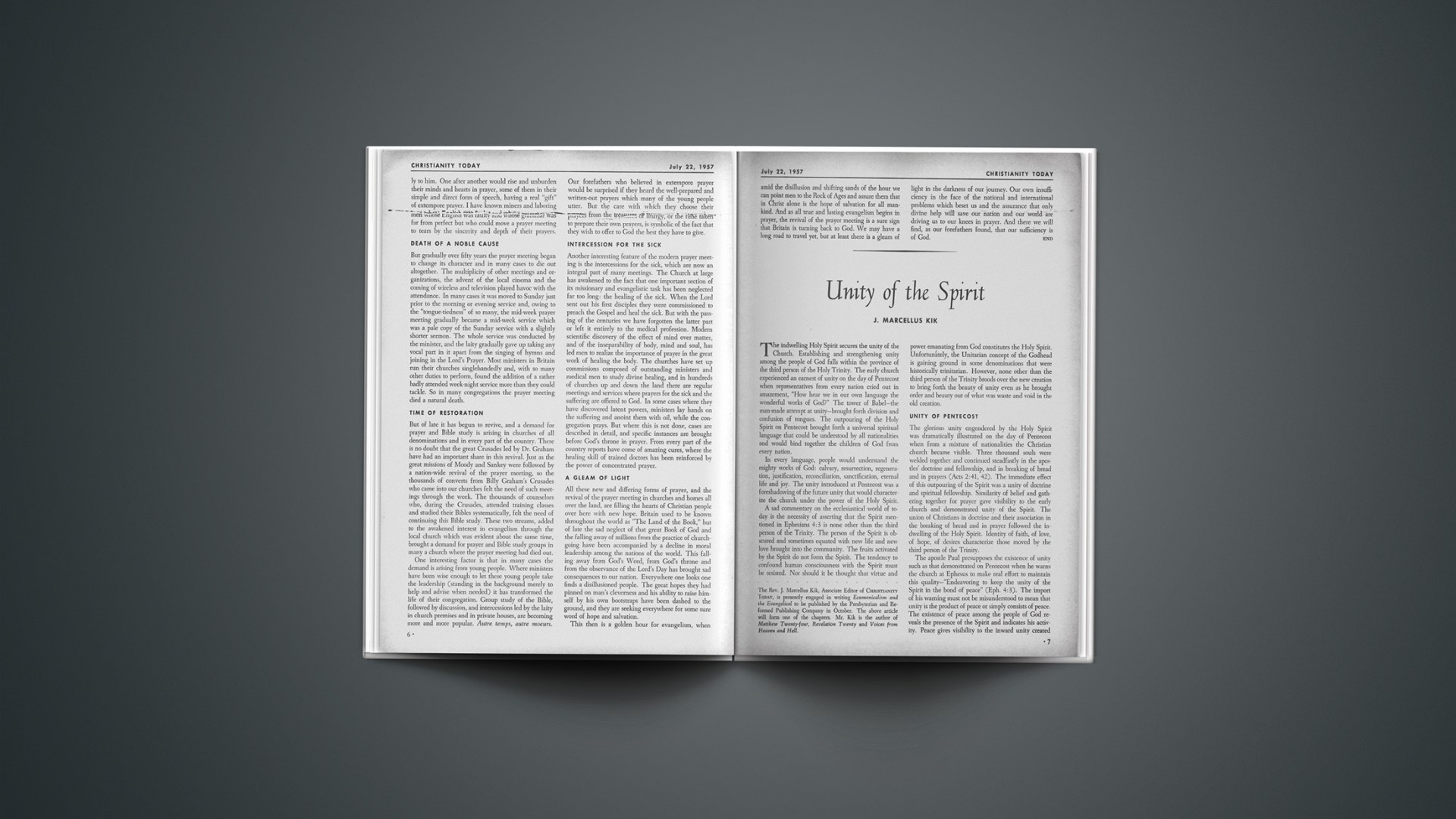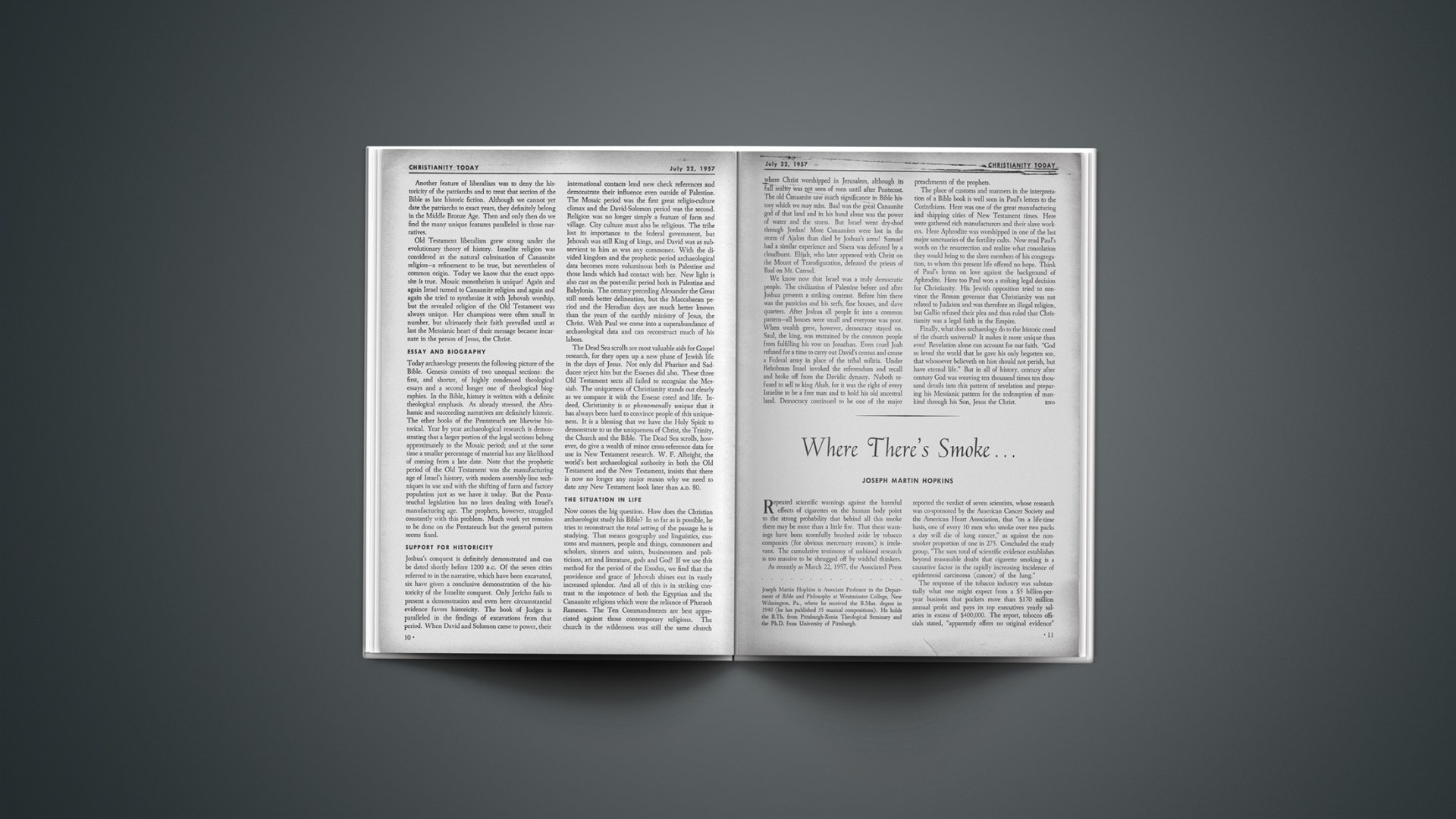Lives Of Service
Iranian government officials and the people have shown unusual appreciation for the work of Dr. Rolla E. Hoffman and his wife, Dr. Adelaide Kibbe Hoffman, who are finishing their missionary service for the Presbyterian Church in the U.S.A.
Dr. Hoffman went to Iran in 1915. He treated multitudes of sick people in Meshed, Eastern Iran and in 1947 transferred his work to Resht, near the Caspian Sea. Mrs. Hoffman began her missionary career at Meshed in 1929 and has spent 20 years in Resht, ministering to women and children. She is greatly beloved.
The Iranian governor general of the province arranged a farewell meeting in the city hall. A number of leading citizens were invited. The governor praised Dr. Hoffman as a “man of God” and lauded his years of selfless service to the people of Iran. He said photographs of the occasion would be placed in all the hospitals of Resht as a memorial to the Hoffmans.
An old and highly respected citizen of Resht, a Moslem by faith, expressed his appreciation in these words, “Dr. Hoffman has fully revealed in his life and work the spirit and teaching of Jesus Christ.”
—W.M.M.

